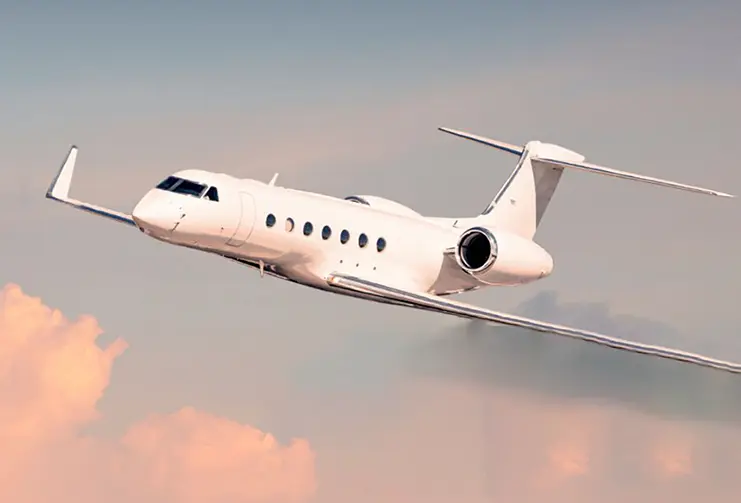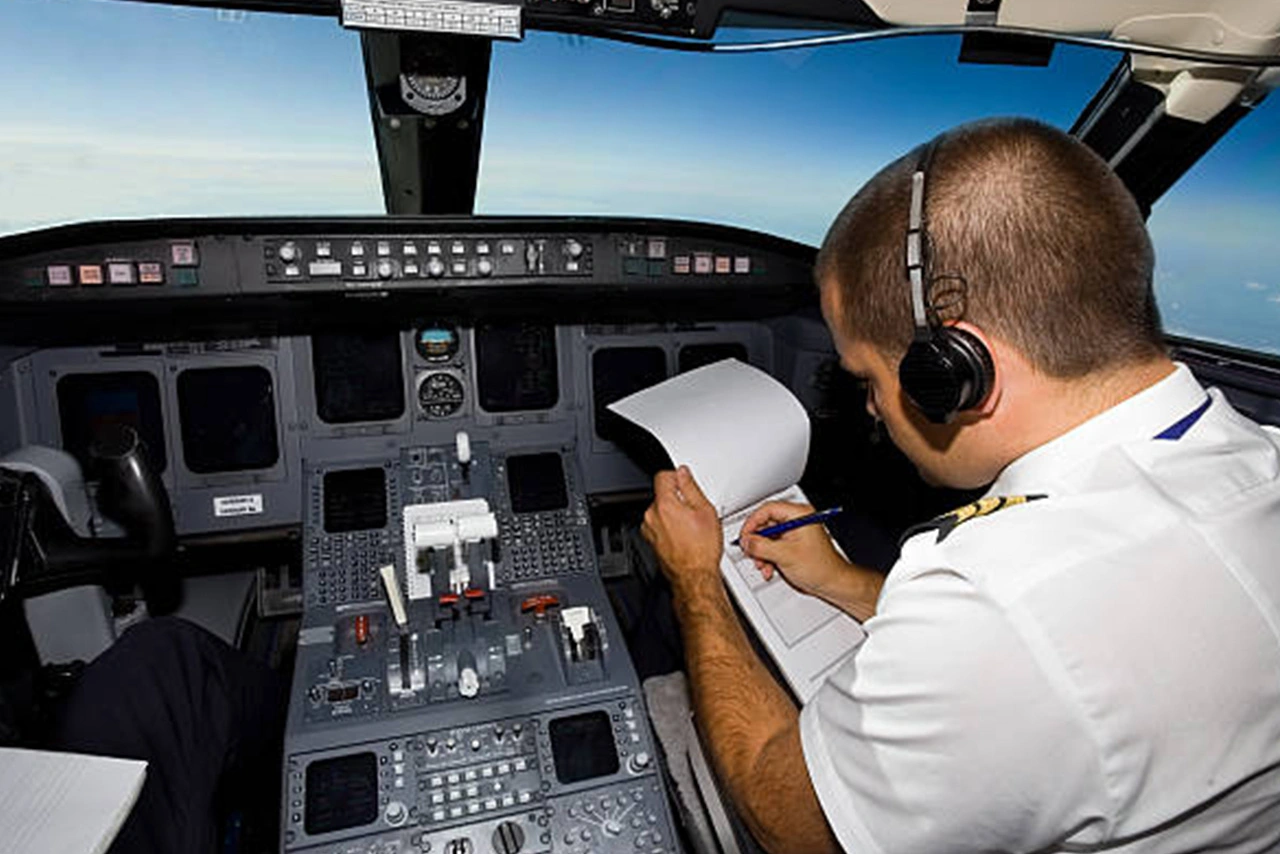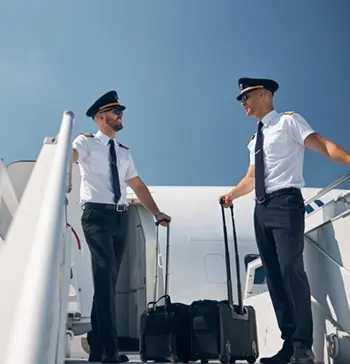
Multi-Engine Rating (MER)

Mastering the Multi-Engine Marvels: Your Guide to Earning a Multi-Engine Rating (MER) in the Philippines
The roar of powerful engines, the smooth climb to cruising altitude, and the confidence of handling a complex machine – these are just a few of the experiences that await pilots who earn a Multi-Engine Rating (MER). If expanding your piloting skills, accessing larger aircraft, and unlocking exciting career opportunities ignite your passion, obtaining your MER in the Philippines could be your key to taking flight.
Unlocking the Power of Multi-Engines:
The MER empowers you to:
- Fly multi-engine aircraft: Safely operate larger and more powerful aircraft, often used for commercial and business aviation.
- Experience enhanced performance: Enjoy increased speed, payload capacity, and redundancy systems for safer flights.
- Expand your career options: Open doors to flying cargo, corporate jets, and other multi-engine aircraft opportunities.
- Sharpen your skillset: Develop advanced aircraft management and decision-making abilities.
Charting Your Course: Embarking on MER Training:
The journey to your MER requires dedication and comprehensive training:
- Advanced Ground School: Deepen your understanding of multi-engine aircraft systems, performance characteristics, and emergency procedures.
- Simulator Training: Hone your multi-engine flight skills in a controlled environment before venturing into actual aircraft.
- Multi-engine Flight Training: Master the intricacies of handling multi-engine aircraft under the guidance of experienced instructors.
- Examinations: Showcase your acquired knowledge and proficiency through written, oral, and practical assessments conducted by the Civil Aviation Authority of the Philippines (CAAP).
Taking the First Step: Prerequisite Checks:
Before embarking on this exciting adventure, ensure you fulfill these fundamental requirements:
- Hold a valid Private Pilot License (PPL): This serves as the foundation for your MER training.
- Age: No specific age requirement, but most applicants are at least 18 years old.
- Medical Fitness: Maintain a valid Class 2 Medical Certificate from a CAAP-approved Aviation Medical Examiner.
- English Proficiency: Demonstrate clear communication skills, crucial for multi-engine operations.
Demystifying the Journey: Exploring the CAAP Training Syllabus:
The CAAP outlines a structured syllabus for MER training, ensuring consistent skill development:
- Advanced Ground School: Covers subjects like multi-engine aircraft systems, emergency procedures, performance calculations, and crew coordination.
- Simulator Training: Includes a minimum of 10 hours of simulator practice focusing on engine failure scenarios, abnormal operations, and multi-engine instrument procedures.
- Multi-engine Flight Training: Includes a minimum of 10 hours of dual instruction and 5 hours of solo flight in multi-engine aircraft.
Breaking Down the Stages:
Your training typically unfolds in these phases:
- Advanced Ground School: Deepen your theoretical understanding of multi-engine systems and procedures.
- Simulator Training: Develop basic multi-engine handling skills and practice emergency responses in a safe environment.
- Multi-engine Flight Training: Begin under dual instruction, gradually progressing to solo multi-engine flights.
- Practical Test: Showcase your acquired skills to a CAAP-designated examiner.
- License Issuance: Upon successful completion of all requirements, proudly receive your coveted MER!
Investing in Your Future: Understanding the Costs:
The exact cost of obtaining your MER varies depending on several factors:
- Flight School: Different schools offer diverse program structures and pricing models.
- Aircraft Availability: Hourly rental rates for multi-engine aircraft impact the overall cost.
- Simulator Availability: Simulator access and hourly fees influence the cost.
- Instructor Rates: Consider the instructor’s experience and hourly charges.
Do I Need to Pay Upfront?
Most flight schools offer flexible payment options to spread the cost throughout your training. Explore installment plans, scholarships, and potential financial aid to make your dream achievable.
Time Commitment: How Long Will It Take?
The duration of your MER training depends on your dedication, available time, and learning pace. On average, expect several months, with dedicated individuals potentially completing it within 3-6 months.
Estimating the Investment:
While exact costs fluctuate, consider this range for budgeting:
- Cost: ₱640,000 – ₱680,000
CAAP Requirements for Your MER :
- Remember, obtaining your MER involves adhering to specific CAAP regulations:
- Maintain a valid Class 2 Medical Certificate.
- Meticulously document your flight training under instructor supervision.
- Meet the minimum flight time requirements: This includes total flight time, multi-engine flight time, simulator time, and solo multi-engine flight time as specified by CAAP.
- Pass both the written and practical examinations conducted by CAAP-designated examiners.
- Demonstrate clear English communication skills throughout training and assessments.
Beyond the Basics: MER Upgrades and Enhancements:
Your MER serves as a springboard for further specialization and career advancement:
- Multi-engine Instrument Rating (MEIR): Qualify to fly multi-engine aircraft under instrument conditions, expanding your operational abilities.
- Airline Transport Pilot License (ATPL) with MEIR: Reach the pinnacle of aviation with advanced multi-engine and multi-crew operations skills.
- Type Ratings: Train and qualify to fly specific multi-engine aircraft models used by airlines or other commercial operators.
Remember, the sky’s the limit! Obtaining your MER unlocks a new realm of possibilities, allowing you to command larger aircraft, explore exciting career paths, and experience the thrill of multi-engine flight. Embrace the continuous learning journey, challenge yourself with further ratings, and soar to new heights in your aviation career.
Ready to Take Off?
If the allure of mastering multi-engine aircraft, experiencing enhanced performance, and unlocking rewarding career opportunities excites you, take the first step! Research reputable flight schools in the Philippines, compare their MER programs and costs, and schedule introductory flights to experience the magic of multi-engine flying firsthand. With dedication, passion, and the right guidance, you can transform your dream of earning your MER into a reality that takes flight.
Additional Resources:
- Civil Aviation Authority of the Philippines (CAAP): https://caap.gov.ph/
- Aircraft Owners and Pilots Association (AOPA) Philippines: https://www.philstar.com/tags/aircraft-owners-and-pilots-association-philippines
- List of Accredited Flight Schools in the Philippines: https://caap.gov.ph/wp-content/uploads/2023/10/List-of-Pilot-Maintenance-Schools-As-of-Sept.-1-2023.pdf
Start your journey today and let the vast blue yonder welcome you with open arms!

Frequently asked questions
What is the multi engine rating (MER) in the Philippines?
The MER allows you to pilot airplanes with more than one engine. This opens doors to larger, faster aircraft and broader career opportunities.
What is required for a multi engine rating (MER) in the Philippines?
-
Hold a valid Private Pilot License (PPL)
-
Minimum flight hours (varies depending on school)
-
Pass theoretical and practical flight tests
-
Class 2 Medical Certificate
How hard is it to get a multi engine rating?
It requires additional training and skills compared to the PPL, but most dedicated students find it achievable.
Is a multi engine rating (MER) worth it?
It depends on your career goals. If you aim for airlines or charter flights, it’s almost essential. For private flying, consider your future aircraft preferences.
Should I get multi-engine before or after commercial?
Many choose after, focusing on the CPL first. However, some schools offer combined programs. Discuss options with your flight school.
How much does it cost to get a multi engine rating (MER) in the Philippines?
Expect a range of $12,000-$13,000 USD, depending on factors like training hours and aircraft types.
How long does it take to get your multi engine rating (MER) in the Philippines?
Typically, 10-20 hours of flight training and around 2-3 months, but varies based on individual progress.
How long does it take to get commercial multi-engine rating?
Getting a Commercial Multi-Engine Rating (CMER) in the Philippines typically takes between 6 to 12 months, depending on several factors:
- Individual Training Pace: This is highly dependent on your learning speed, prior flight experience, and dedication to studying. Faster learners may complete the program quicker, while those who require more time for practice and understanding might take longer.
- Flight School Curriculum: Different schools may have varying program durations based on the structure of their courses, flight hours included, and ground training intensity.
- Weather Conditions: Unfavourable weather conditions can sometimes disrupt flight schedules, causing delays in completing the required flying hours.
- Regulatory Requirements: The Civil Aviation Authority of the Philippines (CAAP) mandates a minimum of 10 hours of flight time on a multi-engine aircraft for obtaining a CMER. However, additional flying hours might be necessary based on individual performance and instructor evaluations.
Here’s a breakdown of the typical timeline:
- Ground Training: This usually takes 2-4 weeks and covers theoretical knowledge specific to multi-engine operations, emergency procedures, and regulations.
- Flight Training: This involves practical flying experience under the guidance of a certified flight instructor. The minimum required 10 hours can be spread across several weeks, depending on the chosen schedule and weather conditions.
- Examinations: You’ll need to pass both written and practical flight tests conducted by CAAP-authorized examiners.
Do you need multi-engine rating for ATP?
Not required but increases employability and allows piloting larger aircraft.
Does multi-engine have a written test?
Yes, covering multi-engine aircraft knowledge and procedures.
Does a multi-engine rating count for high performance?
No, a separate High-Performance Rating is needed for specific aircraft types.
Can a private pilot get a multi engine rating?
Yes, private pilots can pursue an MER.
Does multi engine rating (MER) expire?
Yes, like other pilot licences, it requires a recurrent training program to maintain validity.
Is there a commercial multi engine rating?
Yes, it combines CPL and MER training, check with your school for details.
Free Career Guide

Want to find out more about our pilot courses?
Download our free eBook to learn all about pilot training in the Philippines, including the qualifications needed, the training process, available courses, and career opportunities. Find out how you can take the first step toward a rewarding career in aviation.






